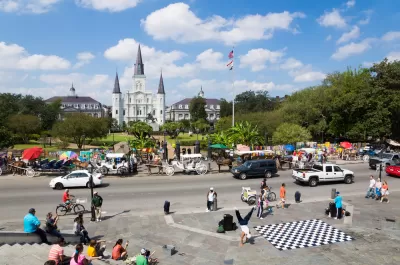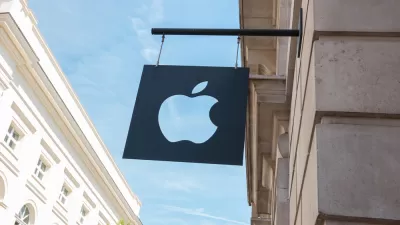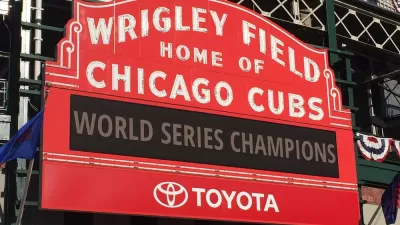Digital connection is no substitute for the vitality and community created by open, pleasant public squares and plazas.

According to an article by Alan Ehrenhalt in Governing, the importance of public plazas as centers for social life, from ancient Mesopotamia to Portland, Oregon, is “impossible to dispute.” Yet, despite the continued popularity of places like Manhattan’s Washington Square, Jackson Square in New Orleans, or Philadelphia’s Rittenhouse Square, “We sometimes forget the importance of central squares in even the largest American cities.”
Ehrenhalt mentions several ambitious projects planned in small towns that hope to reinvigorate their stagnant public squares, such as a $100 million town square in Xenia, Ohio, whose original square was destroyed by a tornado. Ehrenhalt admits that projects like this may not go as planned, “But the mere fact that [they are] being discussed should count as an achievement,” Ehrenhalt writes.
In an age of constant virtual connection, Ehrenhalt asks, do we still need these physical spaces? “A number of urban planners have argued that we do need them, and that we can create them out of what might seem the least promising material.” According to David Gensler, “open space and town squares humanize and invigorate cities and are essential to the health and welfare of the people who live and work in them.” The lasting appeal of Jackson Square, Portland's Pioneer Courthouse Square, and others signal that this continues to ring true.
FULL STORY: The Town Squares We Used to Have — and Could Have Again

Trump Administration Could Effectively End Housing Voucher Program
Federal officials are eyeing major cuts to the Section 8 program that helps millions of low-income households pay rent.

Planetizen Federal Action Tracker
A weekly monitor of how Trump’s orders and actions are impacting planners and planning in America.

Ken Jennings Launches Transit Web Series
The Jeopardy champ wants you to ride public transit.

Washington Legislature Passes Rent Increase Cap
A bill that caps rent increases at 7 percent plus inflation is headed to the governor’s desk.

From Planning to Action: How LA County Is Rethinking Climate Resilience
Chief Sustainability Officer Rita Kampalath outlines the County’s shift from planning to implementation in its climate resilience efforts, emphasizing cross-departmental coordination, updated recovery strategies, and the need for flexible funding.

New Mexico Aging Department Commits to Helping Seniors Age ‘In Place’ and ‘Autonomously’ in New Draft Plan
As New Mexico’s population of seniors continues to grow, the state’s aging department is proposing expanded initiatives to help seniors maintain their autonomy while also supporting family caregivers.
Urban Design for Planners 1: Software Tools
This six-course series explores essential urban design concepts using open source software and equips planners with the tools they need to participate fully in the urban design process.
Planning for Universal Design
Learn the tools for implementing Universal Design in planning regulations.
Heyer Gruel & Associates PA
Ada County Highway District
Institute for Housing and Urban Development Studies (IHS)
City of Grandview
Harvard GSD Executive Education
Toledo-Lucas County Plan Commissions
Salt Lake City
NYU Wagner Graduate School of Public Service





























